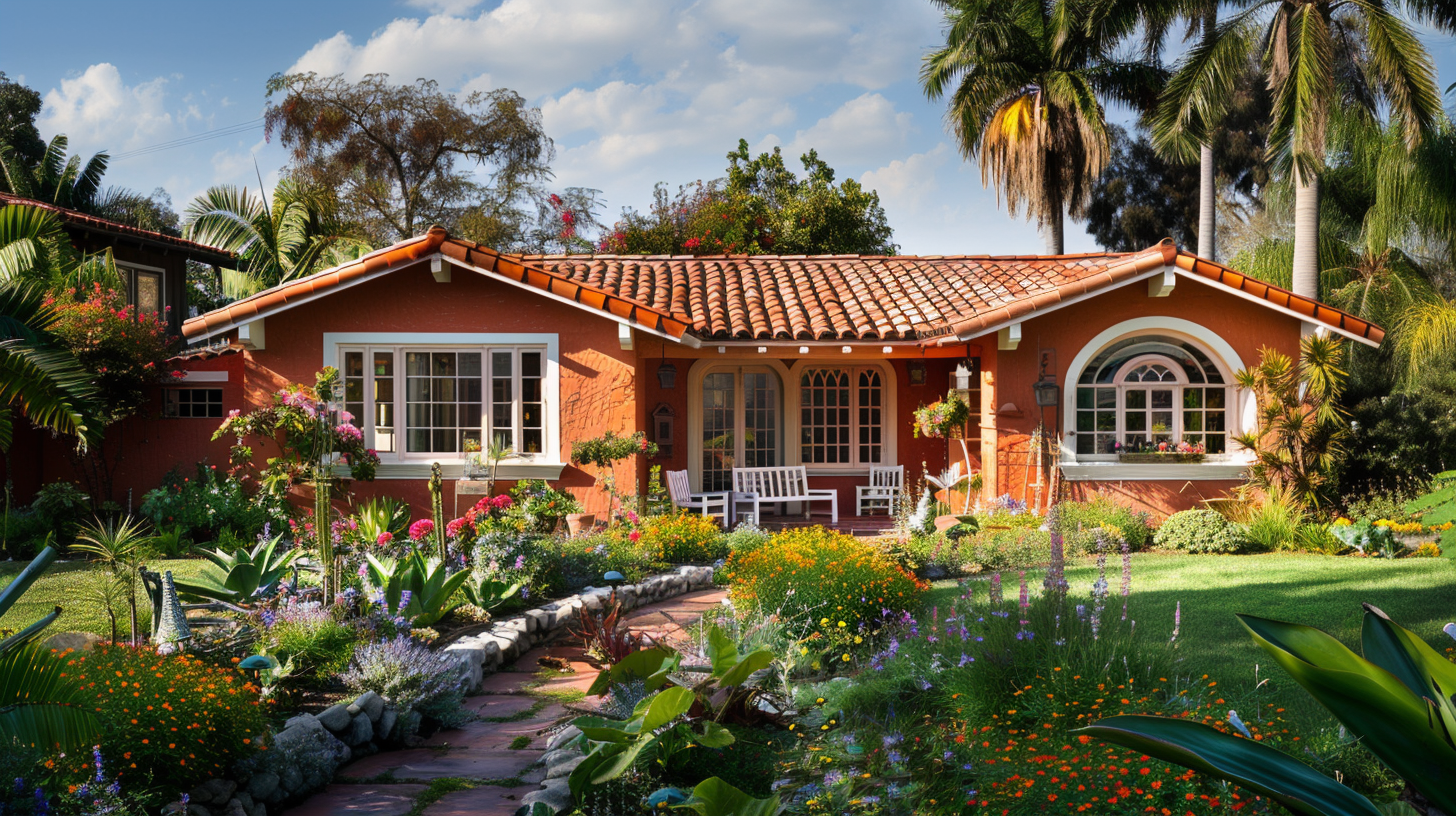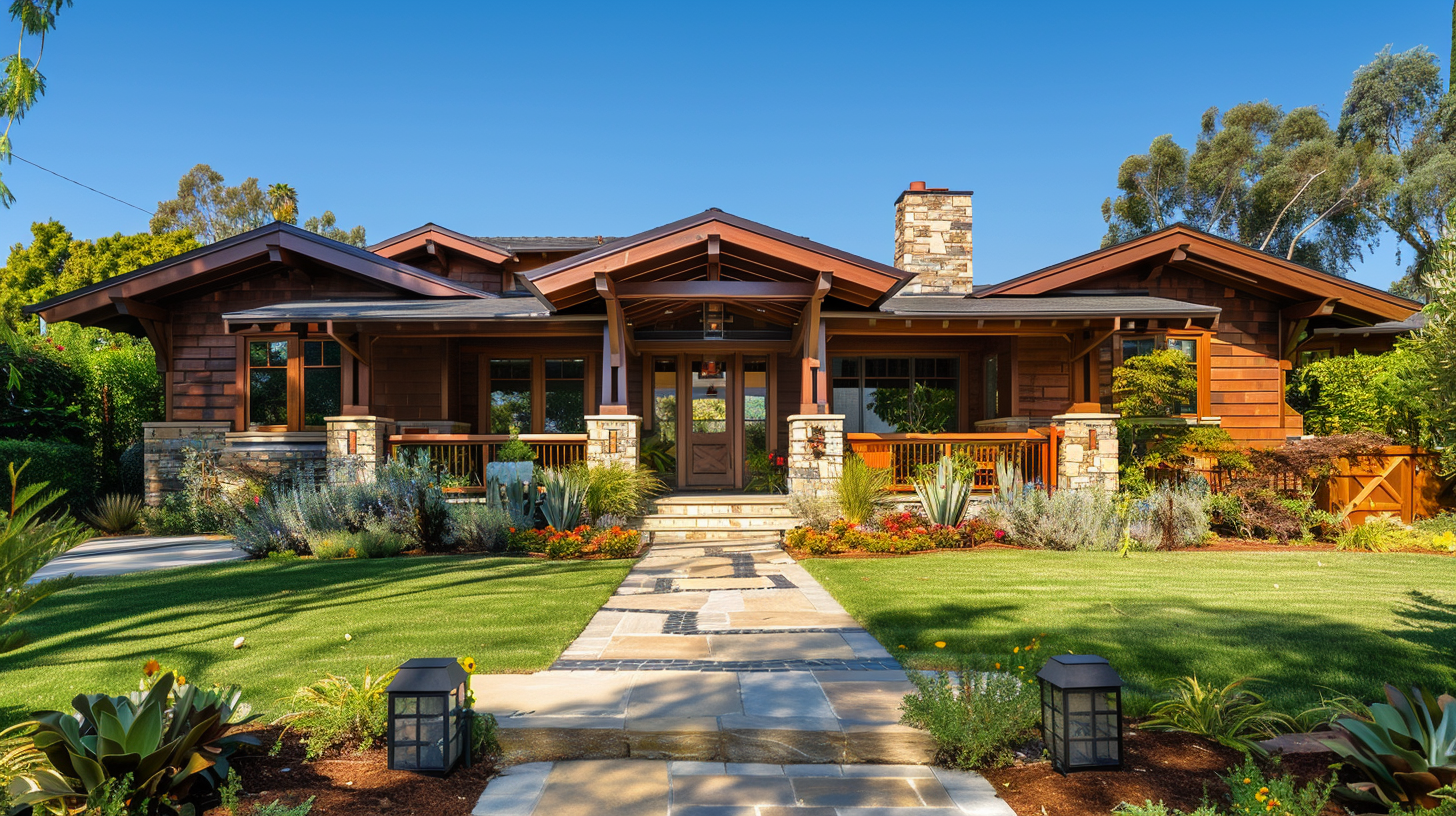Period Home Renovation
Simply call or click to get started
We're open!
Use this form anytime...
Tips for Rehabbing Craftsman Homes & Bungalow Homes
Historic homes are full of charm and stories of days gone by. Unfortunately, sometimes they aren’t very well taken care of and fall by the wayside. Rehabbing a period home (like one of the wonderful Craftsman homes or bungalow homes in Southern California) can be like taking a part of the past and bringing it to life again.
It’s pretty tempting to take a run-down home and make it shine like the jewel it once was.
You don’t have to be Nicole Curtis from HGTV’s Rehab Addict to rehab a historic home. Yet, you do need to be prepared to do it right.
Here are some tips for rehabbing a historic home - including a 1930s bungalow home remodel:
Educate Yourself
When was the historic home built? What sorts of architectural details are indicative of that time period? What has been “updated” that you need to take out and restore back to the way it used to be? Take some time to study and learn about the homes built in your area during that time period before you embark on this journey. Check out books about home architecture. Perhaps find other homes you can look at that can help you visualize the end result. Go to your local historical society to see old photos of what homes looked liked back in the day.
Find A Good General Contractor Who Has Experience With Period Homes
Not all contractors are willing to take on a historic remodel, or even have the know-how to do it. This will require a bit more searching on your part. It’s not like there are lots of historic rehabs going on all the time.
Your project is pretty unique, so you’ll need to take your time and find a contractor who can do this right.
Ask for referrals of other historic rehabbers, or as your local home builders’ association for a contractor who they know has worked on a historic home before.
Decide How Authentic You're Going To Be
There are varying degrees of “rehabbing” a home to its original state. Obviously, you could go overboard and find as many original and period details as possible, spending all sorts of time and money getting things perfect. Don’t stress yourself out so much or empty your wallet so quickly. Probably the best solution is to do what you can within reason. If you can find ways to restore how it used for a reasonable price, then do it. Original pieces are great, but so are reproductions, or “almost” there pieces. Maybe your house was built in 1951 but your light fixture was made in 1960. Is that close enough? A better question would be, is the overall feel and look to the home cohesive?
Repair What You Can Rather Than Replace
Old tile or hardwood floors can be cleaned and revived. Keep them rather than replace them. Apply that same idea throughout the house. Anything that you can repair is worth the elbow grease it takes to bring it back to life. Sure, it can take more hours to repair rather than just rip out and replace, but you’ll be much happier with the end result if you can keep more of the original parts of the house. You just can’t buy new things that look as authentic as the old.
Add Some Modern Conveniences
Adding modern conveniences does mean that you lose a little bit of the old. Make it livable for current day while still keeping the old feel. Get all the plumbing and electrical updated, remodel that kitchen and add that dishwasher, but perhaps keep all the old cabinets and the hardwood floors and shiplap walls. Sure, the modern conveniences you are adding aren’t original or weren’t even invented when the house was built, but someone is living in it now. You can have both and be ok. Another thing that many rehabbers add is storage space. Many older homes simply didn’t have any! Find creative ways to add it here and there, like a window seat with hidden storage underneath, or more shelving in different parts of the house. If that’s not enough, be bold and add a big closet where you need it most. Sure, it eats into the original house, but it makes it more livable now so you can hide away things and show off the house itself.
Forget About What's Hot Right Now
A historic home has withstood the test of time, and with your help it can keep on going strong for years to come. But if you put something trendy in it, then it won’t really stand the test of time, will it? Forget about what’s hot now, and look at what’s classic. Go with wood and natural stone rather than man-made materials. What will people still appreciate in 10 or 20 years from now? Classic looks and anything that is quality. Resist the temptation to make it hip; instead make it true to itself.
Rehabbing a historic home is not for the faint of heart. This is not your typical home remodel project. You have to think a little bit differently, so play ahead, know what you’re getting into, and enjoy the ride.
What To Do Now
As you now know, there are numerous benefits of having a period house renovation - including for a 1930s bungalow remodel. What you may not know is that Michael Baum is a highly-regarded Long Beach CA based bungalow home remodeling contractor, bungalow builder, and an Angie’s List “Super Service Award” winner for four years in-a-row.
Call Michael Baum now at (562) 424-2286
Bungalow and Craftsman Home Renovation FAQ
Q: What are the key features of Bungalows and Craftsman style homes?
A: Bungalows and Craftsman style homes are known for their low-pitched roofs, wide eaves with exposed rafters, large porches, open floor plans, built-in cabinetry, and the use of natural materials like wood, stone, and brick. They emphasize simplicity, handcrafted elements, and harmony with nature.
Q: How can I preserve the architectural integrity of my Bungalow or Craftsman home during renovation?
A: To maintain the architectural style, focus on restoring original features such as woodwork, built-ins, and windows. Choose materials and colors that complement the home's character, and consult with a professional who specializes in historic preservation for guidance.
Q: Can I add a second story to my Bungalow or Craftsman home without compromising its style?
A: Yes, it's possible to add a second story, but it's essential to retain the home's architectural proportions and design elements. Work with an architect who understands the style to ensure a seamless addition.
Q: What are the best ways to update the kitchen and bathrooms in Bungalows and Craftsman style homes?
A: Focus on maintaining the original layout and built-in features while updating fixtures and finishes. Use period-appropriate materials, such as subway tile and hexagonal floor tile, and consider custom cabinetry to match the home's style.
Q: Can I modernize the open floor plan of a Bungalow or Craftsman home without losing its character?
A: Yes, you can modernize the open floor plan by removing non-load-bearing walls to create more open spaces. However, it's essential to retain original architectural details like woodwork, built-ins, and exposed beams to preserve the home's character.
Q: How can I improve energy efficiency in my Bungalow or Craftsman home?
A: Update insulation, install energy-efficient windows, and consider adding solar panels or a geothermal heating and cooling system. Preserve the architectural style by choosing energy-efficient solutions that blend with the home's design.
Q: What is the best way to maintain the exterior woodwork of my Bungalow or Craftsman home?
A: Regularly inspect the woodwork for signs of damage, decay, or insect infestation. Clean and repaint or stain as needed to protect the wood and maintain the home's appearance. Consider using modern, durable materials that mimic the look of wood if replacement is necessary.
Q: How can I expand the living space in my Bungalow or Craftsman home?
A: Consider adding an addition to the rear or side of the house, converting an attic or basement into usable space, or building a detached structure like a garage or guesthouse that complements the home's style.
Q: Can I replace the original windows in my Bungalow or Craftsman home with modern windows?
A: It's possible to replace original windows with energy-efficient options that maintain the look of the home. You can choose windows with similar design elements, such as divided lights and wood framing, and consult with a historic preservation specialist if necessary.
Q: How do I choose the right color palette for my Bungalow or Craftsman home?
A: Focus on earthy, natural colors that complement the home's materials and architectural style. Popular color schemes include warm browns, greens, and blues, as well as muted shades of red and yellow. Consult with a professional or research historical color palettes for guidance.
Thank you for sharing this page!
Filed Under: #bungalow #craftsman #renovation



